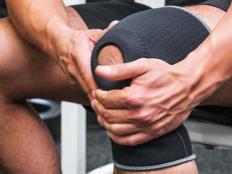
Many athletes use altitude-training programs to enhance their physical performance. However, utilizing these concepts for fitness purposes can be a little tricky. Here are some of the common thoughts, right or wrong, regarding high-altitude training and how it can help or hurt you in your fitness pursuits.
Training at altitude is beneficial because the air is thinner.
FICTIONIt's not the lack of oxygen that makes your body work so hard at altitude. It really has to do with the barometric pressure. Even at 10,000 feet, there is still 29 percent oxygen in the air, and out of that 29 percent you only take in around 10 percent of the oxygen you breathe. The big challenge is your ability at altitude to extract the oxygen and get it into your bloodstream at altitude.
At sea level, your body uses air pressure to its advantage. It allows all of the weight from the atmosphere to help push the air into your lungs, moving the air from an area of greater pressure to lower pressure.
More: The Effects of High-Altitude Training
The same happens at a cellular level, where the pressure then allows the air (including oxygen) to be pressed into your bloodstream.
When you work at a place that is higher than sea level, you start to experience less barometric pressure. Thus the air is not forced into the bloodstream as easily, making the body work harder.
Over time, the body will grow more red blood cells to help ease the struggle of getting oxygen. These cells help carry oxygen through the body, which will result in better fitness/sports performance.
Training at altitude will make me more fit.
FACTProfessional and Olympic athletes have known the benefits of altitude training for years. After all, there is an Olympic Training Center in Colorado Springs, Colorado, for a very good reason. If someone trains at altitude, they will see improvements in their maximal oxygen uptake (the ability to take oxygen in and move it into the blood stream), increased lactate threshold (the ability of the body to get over the "burn"), improved power output, and better sleep (which helps repair the body). These benefits are all a result of the red blood cell production caused by the adaptation to low-barometric pressure.
- 1
- of
- 2
About the Author

Get ACTIVE on the Go


Couch to 5K®
The best way to get new runners off the couch and across the finish line of their first 5K.
Available for iOS | Android






Discuss This Article